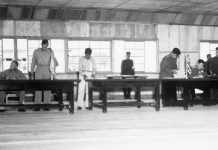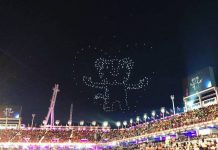Pavel P. Em(SNUAC)
Why is the North Korean approach to urban sustainability unintended and deserving of attention?
The idea of urban sustainability, considered to be an attempt to balance economics and the environment, emerged not long ago. Although this topic is widely discussed, generally, only the most developed countries take serious steps to pursue urban sustainability due to the required massive investment.
In contrast, North Korea is usually considered to be one of the most underdeveloped countries in the world, and the common understanding is that this fact limits the country’s implementation of urban sustainability practices. However, due to harsh economic sanctions implemented by the UN Security Council and other particular countries, North Korea has had no alternative but to develop its urban centers in a sustainable manner to survive under conditions of almost complete economic isolation and significant shortages of vital resources. Moreover, since the socialist bloc contributed significantly to the reconstruction of North Korean cities after the Korean War, they inherited urban features that may potentially increase their level of sustainability.
The Green City of Pyongyang

(© wikipedia)
The abundance of greenery was one of the most positive legacies of socialist cities (Hirt, 2013). However, a reactivation of marketization, followed by the fall of the Berlin Wall, consequently initiated a dramatic transformation of the cities located in the countries of Central and Eastern Europe. To turn a profit as land and property markets re-emerged, developing companies endeavored to occupy as much urban green space as possible with new housing, parking facilities, and other infrastructure (Badiu et al, 2019).
Capitalist cities, or at least their residents, want to enlarge green areas in every way possible as they deem this step to be beneficial for a more balanced urban environment, and therefore as an improvement in quality of life. However, market mechanisms have made the emergence of new green areas an extremely difficult task, the main reason of which being enormously high land prices. Therefore, vegetation on the roofs and walls of buildings, as well as indoor gardens, became widespread (Manso & Castro-Gomes, 2016), and buildings with these features have become more preferable than those without (White & Gatersleben, 2011). Such market factors make these green injections an important characteristic of modern architectural style for both private and public buildings (Hopkins & Goodwin, 2011). Therefore, this is an intriguing paradox, as it seems that capitalist cities have begun to follow one of the most common features of socialist cities some decades after the fall of the Berlin Wall.
What about Pyongyang? Yim (2016) logically argued that in Pyongyang, urban fabric is organically integrated into green areas, rather than the other way around, as in the majority of cities around the globe. It was expected that marketization would lead to a significant decrease in the share of vegetation area in the urban centers of the DPRK after the Arduous March. Although new ambitious development projects such as Miraeg Scientists and Ryomyong Streets were completed under moderate governmental control in Pyongyang in the 2010s, this condition directly impacted only shrinkage of green areas from 23.5% in 2000 to 20.6% in 2020 (Zhang et al, 2019). It is not clear whether the DPRK government has somewhat lost control over the city’s land structure or whether it supports the reduction of urban green areas, or perhaps both. However, it seems that the authorities are making efforts to balance this reduction in green area through the employment of alternative mechanisms. For example, Pyongyang has seen a growth in its cultivated area from 62.5% to 66.2%, which counteracts the overall decrease of green space. This leads to the logical question of why the North Korean authorities make such efforts. Therefore, even though Pyongyang emulates the post-socialist cities of Europe in many development directions (Em & Ward, 2021), its green areas have not shrunk significantly.
Rural incorporation into urban Pyongyang
Urban and rural are presumed to have a dichotomous relationship, and a city is generally considered to be something exclusively urban. However, 13.3% of Pyongyang residents lived in rural areas according to the last population census (CBS, 2009). The rural-urban symbiosis is crucial for North Korea, which is attempting to balance commodity self-reliance. However, there looms the risk of a possible insufficient food harvest, especially considering the country’s climate: frequent summer typhoons and harsh winters, which is less than ideal for agriculture. For instance, a series of natural disasters along with a reduction in economic aid from the former socialist bloc led to terrible famine in the mid-1990s.
North Korean urban dwellers practice activities which are not usually thought of as being part of an urban lifestyle. For example, according to the census, 45.5% of them were involved in horticulture and 37% practiced cattle and/or poultry breeding. This is possible because 17.2% and 49.5% of them resided in detached and row houses, respectively (CBS, 2009). Moreover, to maintain personal food security, many households have used balconies, window stills, and window frames for growing, storing, and drying vegetables (Em, 2018). Although this practice was not able to fulfill citizens’ nutrient requirements completely, it played a crucial role during certain periods as an additional source of sustenance.
In contrast with former socialist cities (Nedović-Budić et al, 2006), North Korea took real steps to demolish the disparities between urban and rural areas through incorporating rural zones into cities. For instance, Pyongyang integrated two massive counties and many villages into its urban structure. As a result, Pyongyang’s Kangdon-kun and Kangnam-kun, two counties absorbed by the city, are not only the main areas of rice and goat meat production for the capital region, but also famous as the location of significant mines and hydroelectric power stations (Dormels, 2014). Even though the living conditions of the residents of these wards are inferior to those of the central districts of the North Korean capital, they still may enjoy many privileges not afforded to the residents of other regions.
The combination of rural and urban administrative elements in the DPRK has increased the level of local food security and availability, as well as minimized both the logistical expenditures for food delivery and volume of food waste. Paradoxically, capitalist cities are also currently pursuing a similar orientation to achieve an ecologically friendlier environment.
On the other hand, the DPRK is interested in improving its crop yields, which may be achieved through the employment of modern green technologies in local agriculture. However, since the import of such technologies is restricted by sanctions, farmers often still must rely on animal draft power and limit the amount of basic chemical fertilizers they use. This limitation surprisingly gives the DPRK an advantage in that it mostly produces organic food. Paradoxically, a growing number of consumers around globe have come to prefer this type food despite its expensiveness in comparison with conventionally produced products (Brantsæter et al, 2017). Therefore, it seems that both the residential districts of North Korea, which produce mostly organic food, and those of other countries, which generally produce more conventional products, desire the opposite of the type of food that they currently have.
Can Pyonyang case contribute to debates on urban sustainability?
These two cases from North Korea — the attempts to retain green areas within Pyongyang and the incorporation of rural areas into the city– clearly demonstrate that our understanding of urban sustainability is seriously limited. How was this country capable of designing such approaches to urban sustainability which brought about effective urban policy? This question is intriguing. More detailed research on how North Korean cities maintain sustainable development is indeed needed to make our cities better and more balanced.
About the author
Pavel P. Em(dr.pavelem@gmail.com) is
a Visiting Scholar at the Seoul National University Asia Center (SNUAC). Before that Pavel was a Visiting Research Fellow at the Institute for Far Eastern Studies, Kyungnam University. Pavel obtained a Ph.D. degree in Urban Geography from the Moscow State University in 2013. He took post-doctoral programs at l’École des hautes études en sciences sociales (EHESS) in Paris (2017-2018) and at the Leiden University (2018-2019), each lasting one year. The results of his work are published in many journal articles and in a book. Pavel has presented findings as a guest speaker in a number of institutions , and as a speaker at many conferences both in Korean studies and geography.
References
- Badiu, D.L., Onose, D.A., Nita, M.R., Lafortezza, R. 2019. “From “red” to green? A look into the evolution of green spaces in a post-socialist city.” Landscape and Urban Planning 187, 156-164.
- Brantsæter, A.L., Ydersbond, T.A., Hoppin, J.A., Haugen, M., Meltzer, H.M. 2016. “Organic Food in the Diet: Exposure and Health Implications.” Annual Review of Public Health 38, 295-313.
- Central Bureau of Statistics (CBS). 2009. DPR Korea 2008 population census. National Report. Pyongyang.
- Dormels, R. 2014. North Korea’s Cities. Seoul, Jimoondang.
- Em, P.P. 2018. “Urbanization in North Korea: An Outline of Its Peculiarities and an Estimation of Its Real Rate.” North Korean Review 14(2), 26-45.
- Em, P.P., Ward, P. 2021. “CIty Profile: Is Pyongyang a post-socialist city?” Cities 108, 102950.
- Hirt, S. 2013. “Whatever happened to the (post)socialist city?” Cities 32, S29-S38.
- Hopkins, G., Goodwin, C. 2011. Living Architecture: Green Roofs and Walls. Collingwood, CSIRO PUBLISHING.
- Manso, M., Castro-Gomes, J.P. 2016. “Thermal analysis of a new modular system for green walls.” Journal of Building Engineering 7, 53-62.
- Nedović-Budić, Z., Tsenkova, S., Marcuse, P. 2006. “The urban mosaic of post-socialist Europe.” In Sasha Tsenkova & Zorica Nedović-Budić, eds. The Urban Mosaic of Post-Socialist Europe. New York, Springer.
- White, E.V., Gatersleben, B. 2013. “Greenery on residential buildings: Does it affect preferences and perceptions of beauty?” Journal of Environmental Psychology 31(1), 89-98.
- Yim, D. 2016. (Un)Precedented Pyongyang. Barcelona, Actar.
- Zhang, Q., Zhang, P., Wang, D. 2019. “Land use evolution and simulation prediction of Pyongyang municipality in North Korea from 2000 to 2020.” IOP Conference Series: Earth and Environmental Science 291, 1-8.



